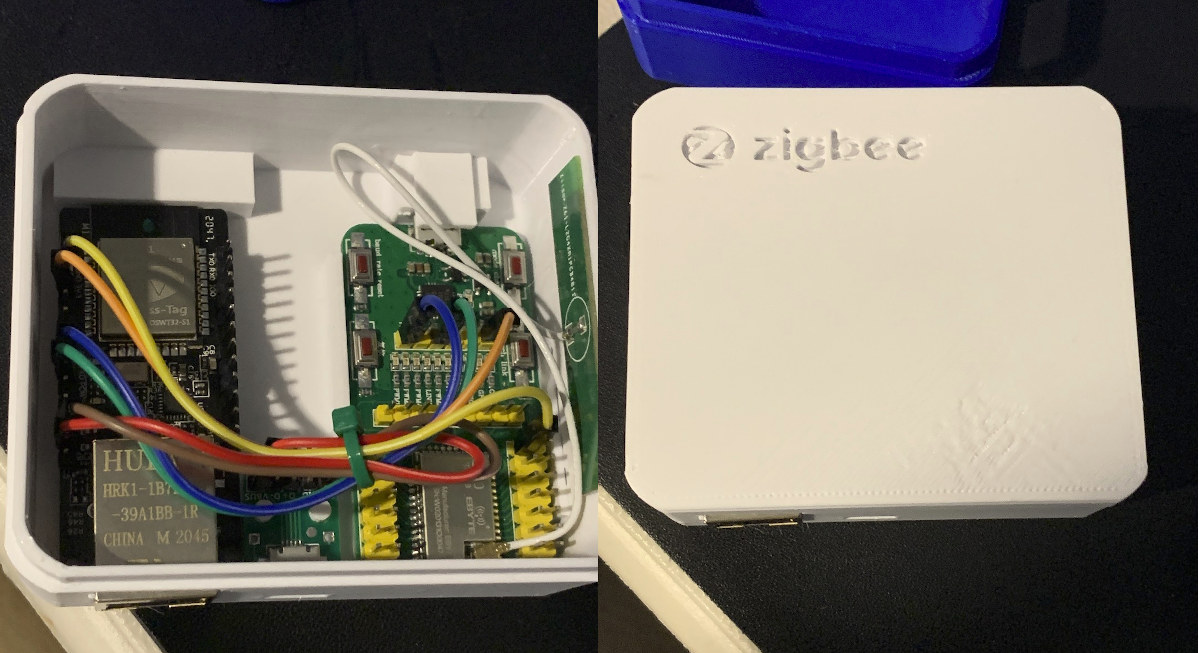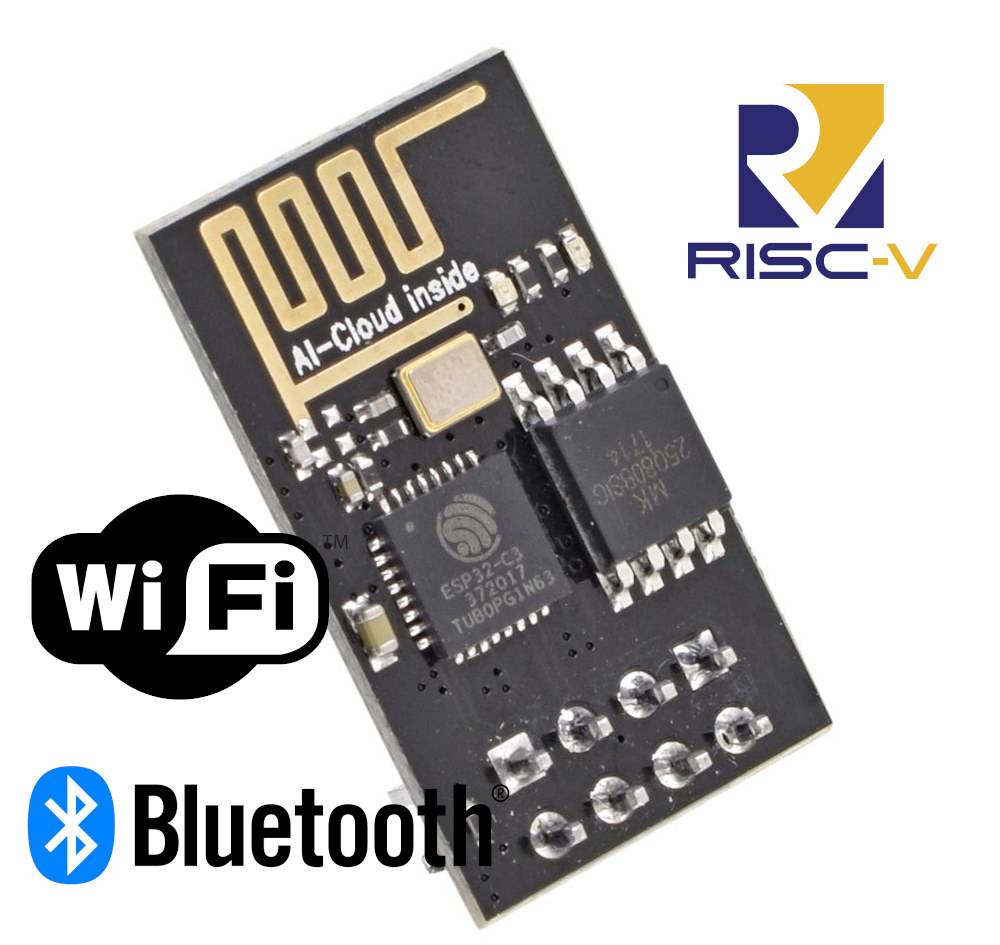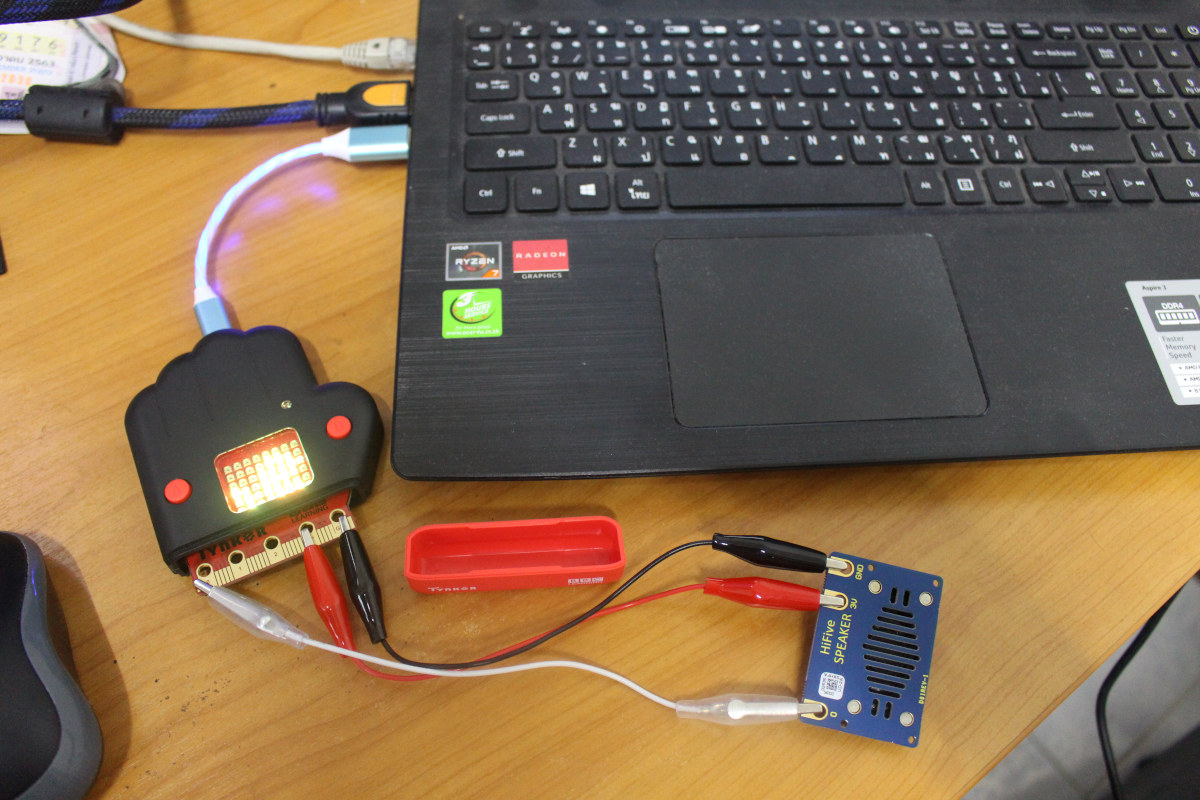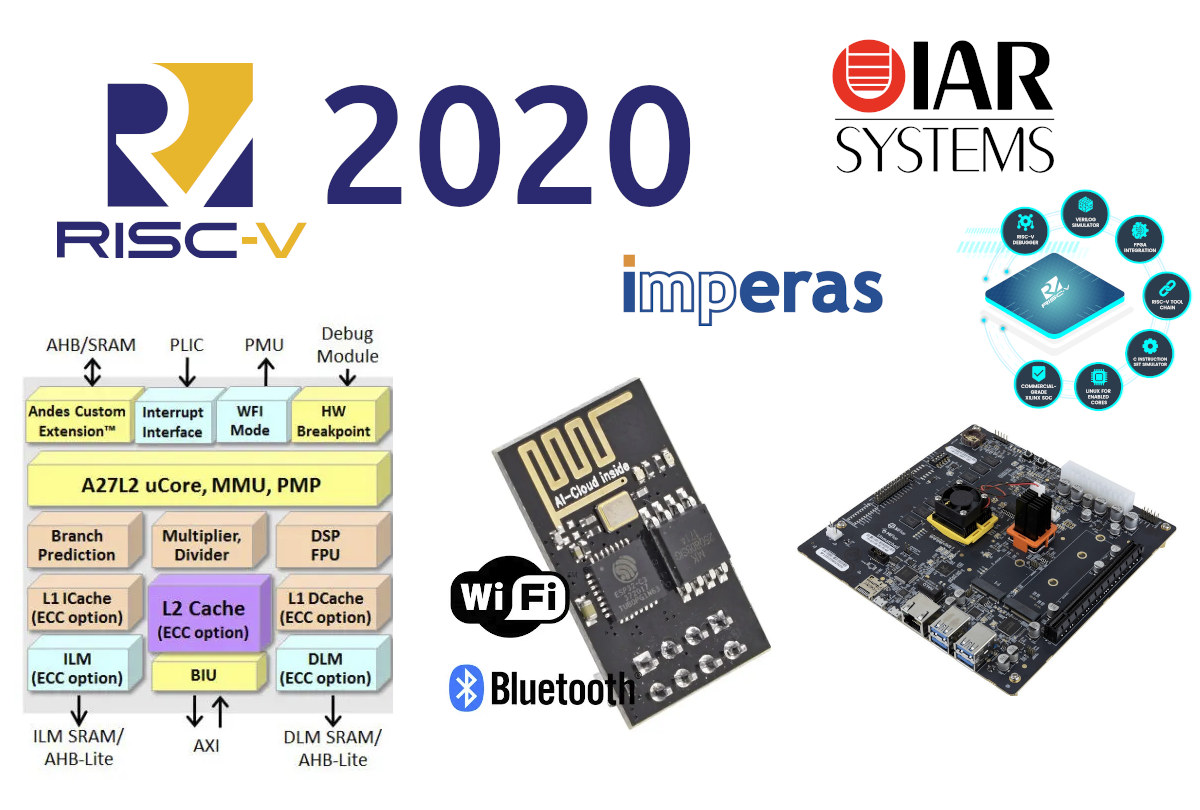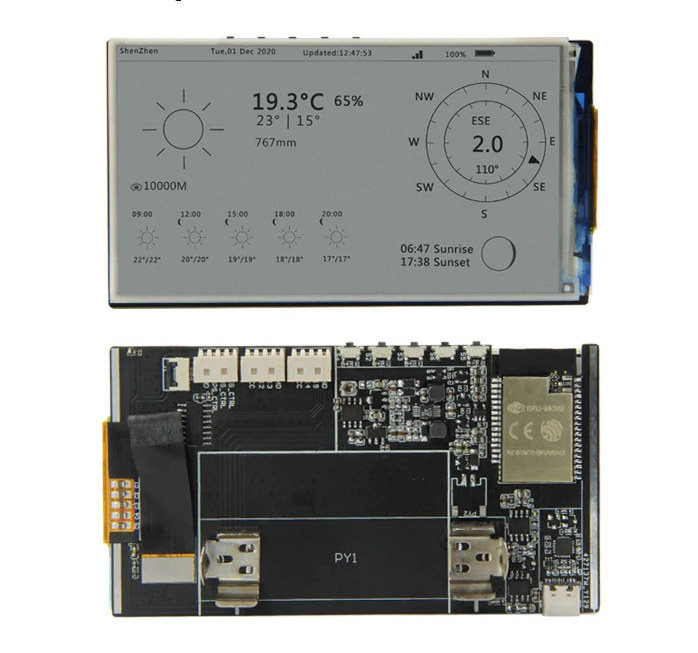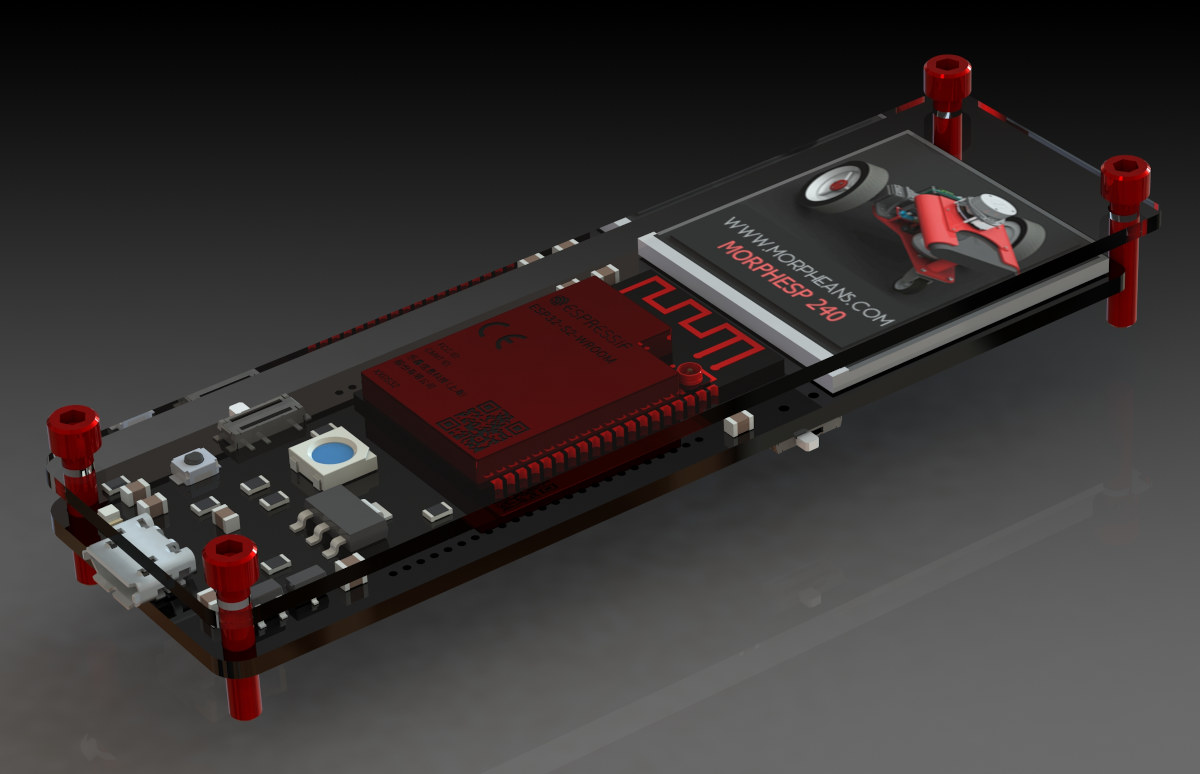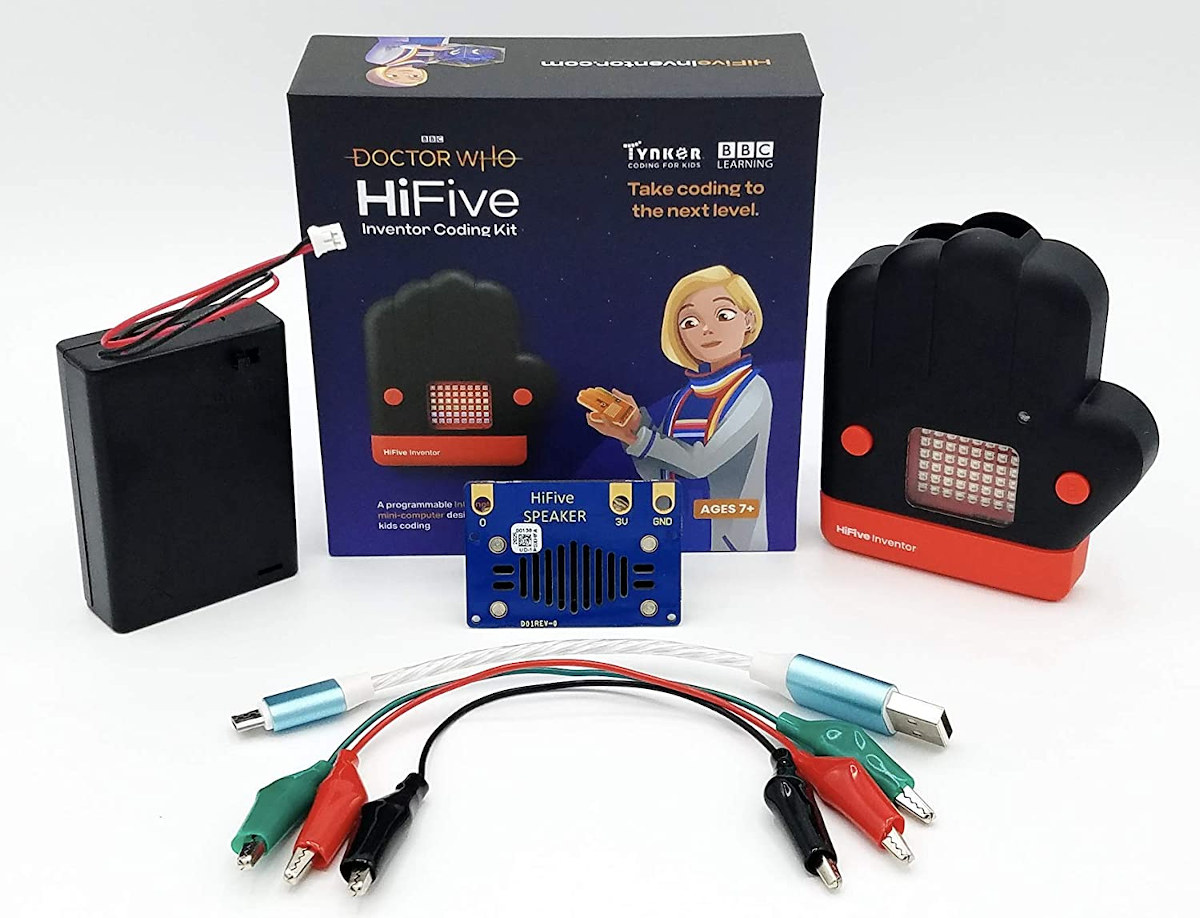We previously wrote about Ebyte E180-ZG120B-TB an inexpensive ($9.90) Zigbee 3.0 evaluation board based on Silabs EFR32MG1B Arm Cortex-M4 wireless MCU and the equally cheap ($7.78) WT32-ETH01 ESP32 Ethernet board. What do they have in common? Absolutely nothing! But GitHub user tube0013 decided to connect both boards over UART to create a Zigbee to Ethernet DIY coordinator/bridge running open-source firmware. The hardware also includes a Micro USB adapter for power, several 10cm jumper wires, and he/she also designed a 3D printed case. EZSP-Firmware is used for the Ebyte Zigbee 3.0 board, and ESPHome open-source home automation firmware for the ESP32 board. You’ll also need serial to IP code and ESPHome config. Note that flashing firmware to the Ebyte requires a programmer, and the developer used a J-link EDU Mini together with Silicon Labs’ Simplicity Commander. As mentioned above, a 3D printed case has also been designed, so everything is neatly […]
ESP32-C3 WiFi & BLE RISC-V processor to launch at ESP8266 price
[Update December 2020: While we first reported ESP32-C3 would be pin-to-pin compatible to ESP8266 based on the tweet mentioned in the post, the datasheets show both are clearly not pin-to-pin compatible, and instead it looks like the goal is to provide pin-to-pin compatible modules] When we reported about ESP32-S2-MINI modules last September, we also noted Espressif teased us with ESP32-S3 and ESP32-C3 with close to no details. ESP32-S3 is expected to be a multi-core WiFI & Bluetooth processor with AI instructions/accelerator, but there were no details about ESP32-C3 at all, and we only found out it would be a RISC-V processor several weeks ago. But Twitter user Johnny Wu posted a screenshot in Chinese and its translation claiming ESP32-C3 was finally released by Espressif Systems. [Update: The datasheet has been released. See comments.] ESP32-C3 WiSoC is pin to pin compatible with ESP8266, works with ESP32 development framework (e.g. ESP-IDF), supports […]
BBC Dr Who HiFive Inventor Coding Kit review – Tynker visual programing and MicroPython
The BBC Doctor Who HiFive Inventor Coding Kit was announced at the end of November 2020 with the goal of teaching IoT to young kids. But one day, I noticed the postman left a package on the ground right next to my house’s gate for some reason. I had no idea what it could be until I read it was from SiFive on the package. So here I am about to review BBC Doctor Who HiFive Inventor Coding Kit! The package actually included two small packages with one being an “expansion board”… HiFive Inventor Coding Kit Unboxing We’ve already written about the specs in the announcement post, but here they are again for those who forgot it’s based on SiFive FE310 RISC-V microcontroller and ESP32 for WiFi and Bluetooth. Let’s open the thinner “expansion board” package first. It’s actually the HiFive Inventor board – aka the mainboard – that comes […]
RISC-V hardware & software ecosystem highlights in 2020
The RISC-V Summit 2020 is currently taking place virtually, and RISC-V International, a non-profit corporation aiming to drive the adoption and implementation of the RISC-V instruction set architecture (ISA), took the occasion to remind us of the growth of the ISA both in terms of commercial adaption, education, and other projects. Calista Redmond, CEO of RISC-V International, detailed the growth in memberships: This year, our technical community has grown 66 percent to more than 2,300 individuals in our more than 50 technical and special interest groups. We’re seeing increased market momentum of RISC-V cores, SoCs, developer boards, software and tools across computing from embedded to enterprise … We’re proud of our growing global membership, which has more than doubled in the last year to 1,000 total members, including 222 organizations.” RISC-V also launched the RISC-V Exchange now listing over 124 RISC-V cores, SoCs, and developer boards, as well as 129 […]
$25 TTGO T5 4.7-inch e-Paper Display comes with ESP32 WiFi & Bluetooth SoC
We’ve very recently covered M5paper IoT development kit based on ESP32 WiSoC, and equipped with a 4.7-inch touchscreen e-Ink display together with a 1,150mAh battery all nicely packed into an enclosure. It looks great, but costs $69, so if you’d like to integrate this type of ESP32 connected display into your own project at a lower cost, you may be interested in TTGO T5 4.7-inch e-Paper display with 16 gray levels fitted with an ESP32-WROVER-E module with 16MB flash, and 8MB PSRAM. TTGO T5 key features and specifications: Display 4.7-inch ePaper display with 960×540 resolution, 16 gray levels , partial refresh support 6-pin FPC touchscreen connector Wireless module – ESP32-WROVER-E with ESP32-D0WDQ6 V3 dual-core processor, 16MB flash, 8MB PSRAM USB – 1x USB-C port Expansion – 4-pin connector with GPIOs, GND, 3.3V Misc – 1x reset button, 4x user buttons Debugging – USB-C port connected to USB to TTL CP2104 […]
M5Paper ESP32 IoT development kit features a 4.7-inch e-Ink touchscreen display
M5Stack has just launched its unique and latest core device with a touchscreen e-Ink display. M5Paper ESP32 IoT Development Kit is a fully programmable microcontroller-based platform that can be an ideal choice for your IoT applications. This low-power device could suit such purposes as an industrial controller or smart weather display. The M5Paper comes with the ESP32-D0WD, the same chip that has powered M5Stack Core2. The e-Ink display supports 16-level grayscale, which provides a great reading experience. The display is a GT911 capacitive touch screen that supports multipoint touch and a variety of gesture controls. M5Paper ESP32 IoT Development Kit Specifications SoC – Espressif ESP32-D0WDQ6-V3 dual-core clocked at 240MHz with 520KB SRAM, Wi-Fi, dual-mode Bluetooth connectivity. Memory/storage – 16 MB of flash memory along with 8 MB of PSRAM. Antenna – 2.4GHz 3D antenna. Display – GT911 capacitive touch screen with 960×540 resolution (IT8951 driver) along with 4.7″ e-Ink display, […]
MorphESP 240 ESP32-S2 board integrates a 1.3-inch color display (Crowdfunding)
We’ve already seen ESP32 platforms with a color display such as M5Stack, but MorphESP 240 is kind of cute with a 1.3-inch color display, features the more recent ESP32-S2 WiFi processor, and supports battery power & charging. MorphESP 240 specifications: Wireless Module – ESP32-S2-WROOM with Espressif Systems ESP32-S2 single-core 32-bit Xtensa LX7 microprocessor up to 240 MHz with 128 KB ROM, 320 KB SRAM, 16 KB SRAM in RTC, 4MB SPI flash, 802.11 b/g/n 2.4 GHz Wi-Fi connectivity Display – Onboard 1.3-inch ST7789 display with 240 x 240 resolution, connected over SPI USB – 1x Micro USB port for power/charging and programming Expansion – 16-pin and 24-pin headers with GPIO, I2C, UART, SPI, USB, and power signals Misc – WS2812B RGB LED connected to IO16, Reset button, boot mode switch, battery on/off switch Power Supply 5 V to 3.3 V regulator to feed additional modules JST connector for a battery […]
BBC Doctor Who “HiFive Inventor” Coding Kit aims to teach IoT to kids
In what should be one of the first RISC-V education platforms, the BBC, Tynker, and SiFive have just announced the BBC Doctor Who “HiFive Inventor” Coding Kit that comes with an MCU board with WiFi & Bluetooth and guided lessons for kids that teach them to code for the IoT. The HiFive Inventor board is based on a SiFive FE310 RISC-V microcontroller ( the same chip as found in the HiFive1 board) and an ESP32 Solo module for WiFi 4 and Bluetooth 4.x/5.x connectivity. Just like the BBC Micro:bit, HiFive Inventor provides a kids-friendly edge connector with I/O, an LED matrix, sensors, and more. The kit includes the HiFive Inventor hardware platform, a battery holder for three AA batteries (not included), the HiFive Speakers, an illuminated USB cable for power and programming, and alligator clips to connect the speaker or other add-ons to the HiFive Inventor board. HiFive Inventor board […]


